WHOSE GAME IS IT ANYWAY?
PICTIONARY CARDS


Photos by R George
I’ve always wanted to play Pictionary, but I’ve never enjoyed word games. Dyslexics may avoid reading because it’s uncomfortable and difficult to process. You don’t need to read to create patterns. This work alters the game to create visual illusions of movement. Inspiration was drawn from Prince, who once said, “Imagine what we’d all be like in our own game.”
I’ve always wanted to play Pictionary, but I’ve never enjoyed word games. Dyslexics may avoid reading because it’s uncomfortable and difficult to process. You don’t need to read to create patterns. This work alters the game to create visual illusions of movement. Inspiration was drawn from Prince, who once said, “Imagine what we’d all be like in our own game.”
︎
FORWARD
FELT
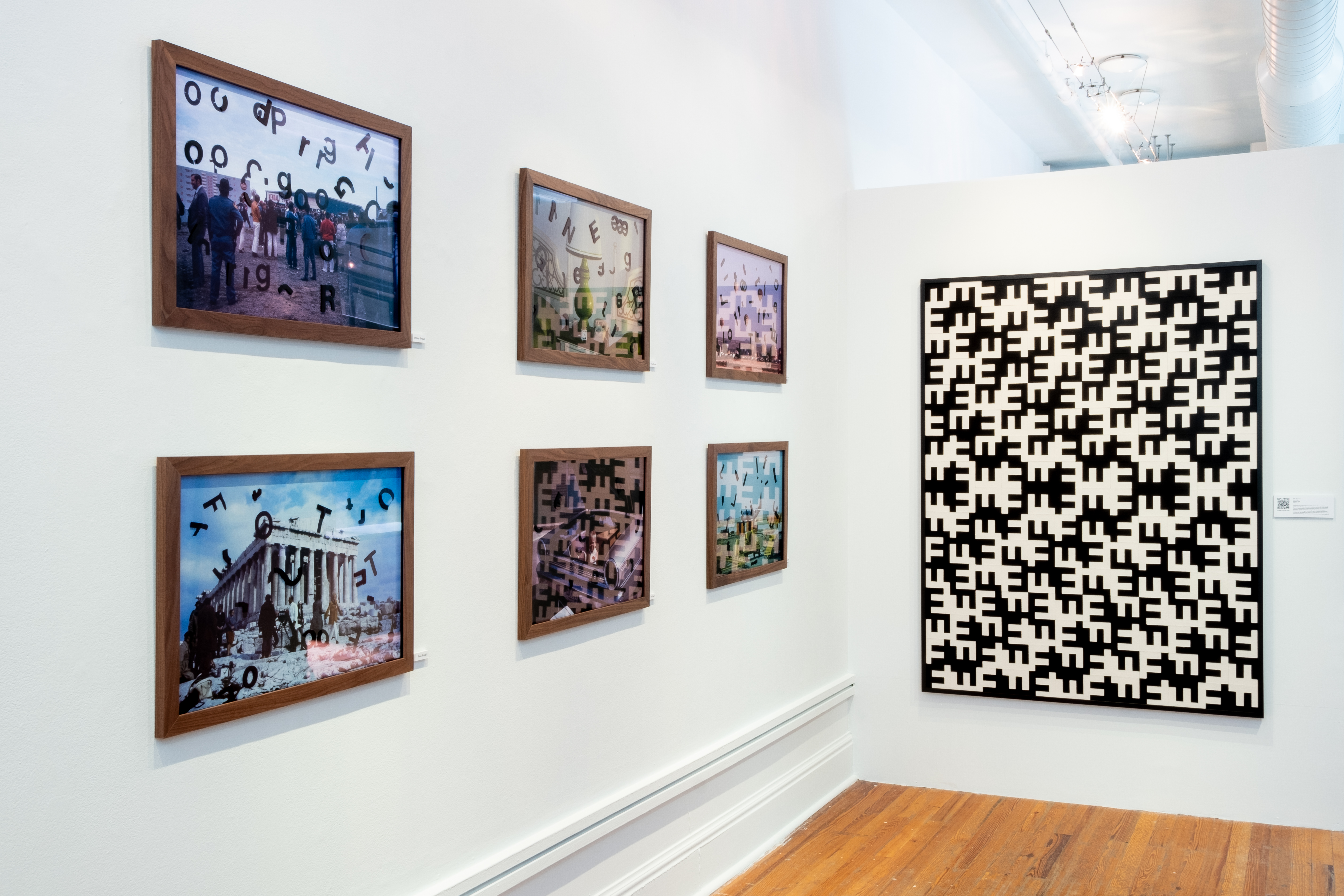
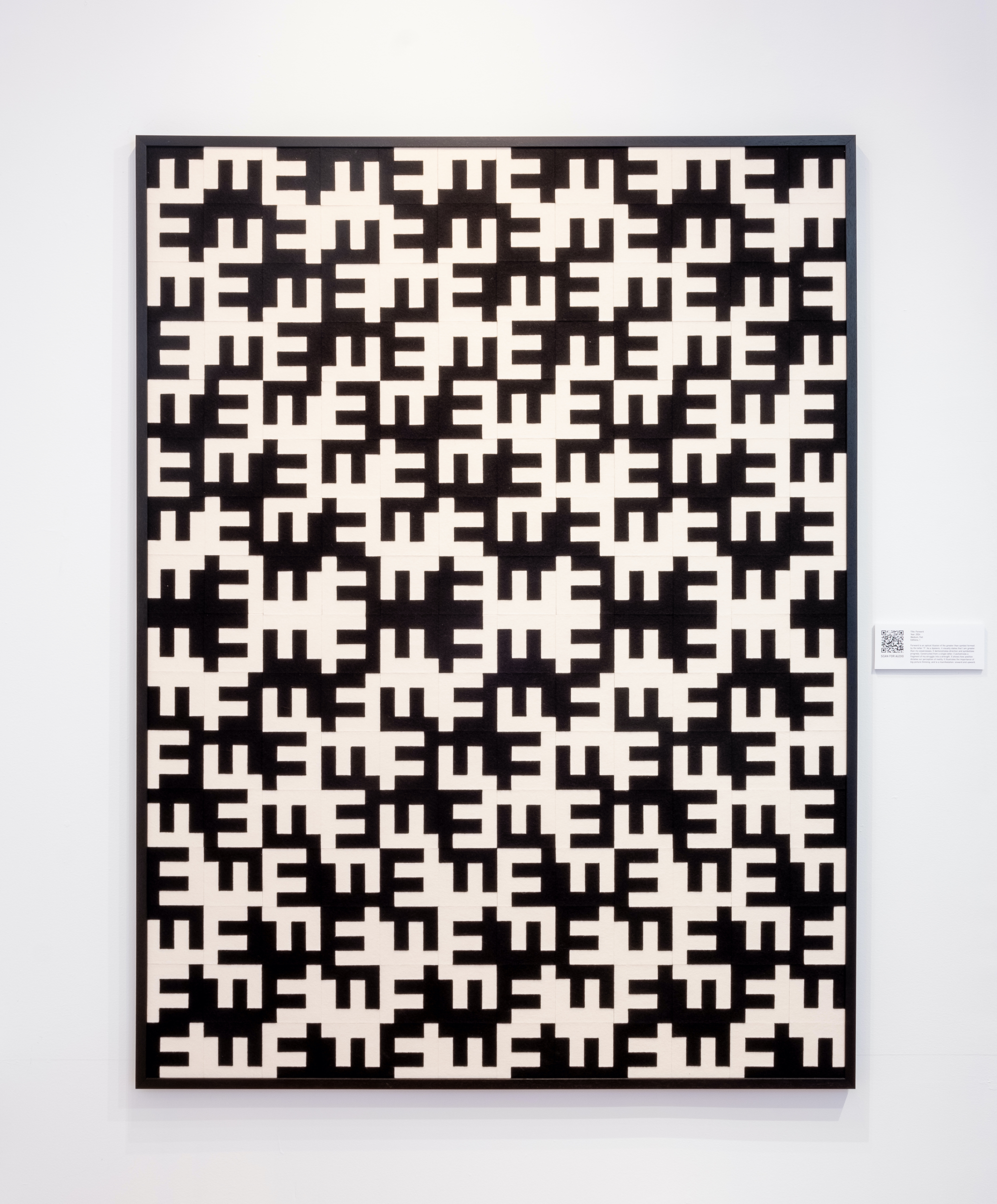
Photos by R George
Forward is an optical illusion of a repeating greater than symbol (>) formed by the letter “F.” As a dyslexic, it visually states that I am greater than my weaknesses. It demonstrates direction and symbolizes progress. Constructed from a single letter, it alchemizes a fragment of my struggle into a strength. It shows how position dictates our perception.
Forward is an optical illusion of a repeating greater than symbol (>) formed by the letter “F.” As a dyslexic, it visually states that I am greater than my weaknesses. It demonstrates direction and symbolizes progress. Constructed from a single letter, it alchemizes a fragment of my struggle into a strength. It shows how position dictates our perception.
︎
TOPOGRAPHY OF SURFACE
GLASS ETCHING, LIGHT, SHADOW
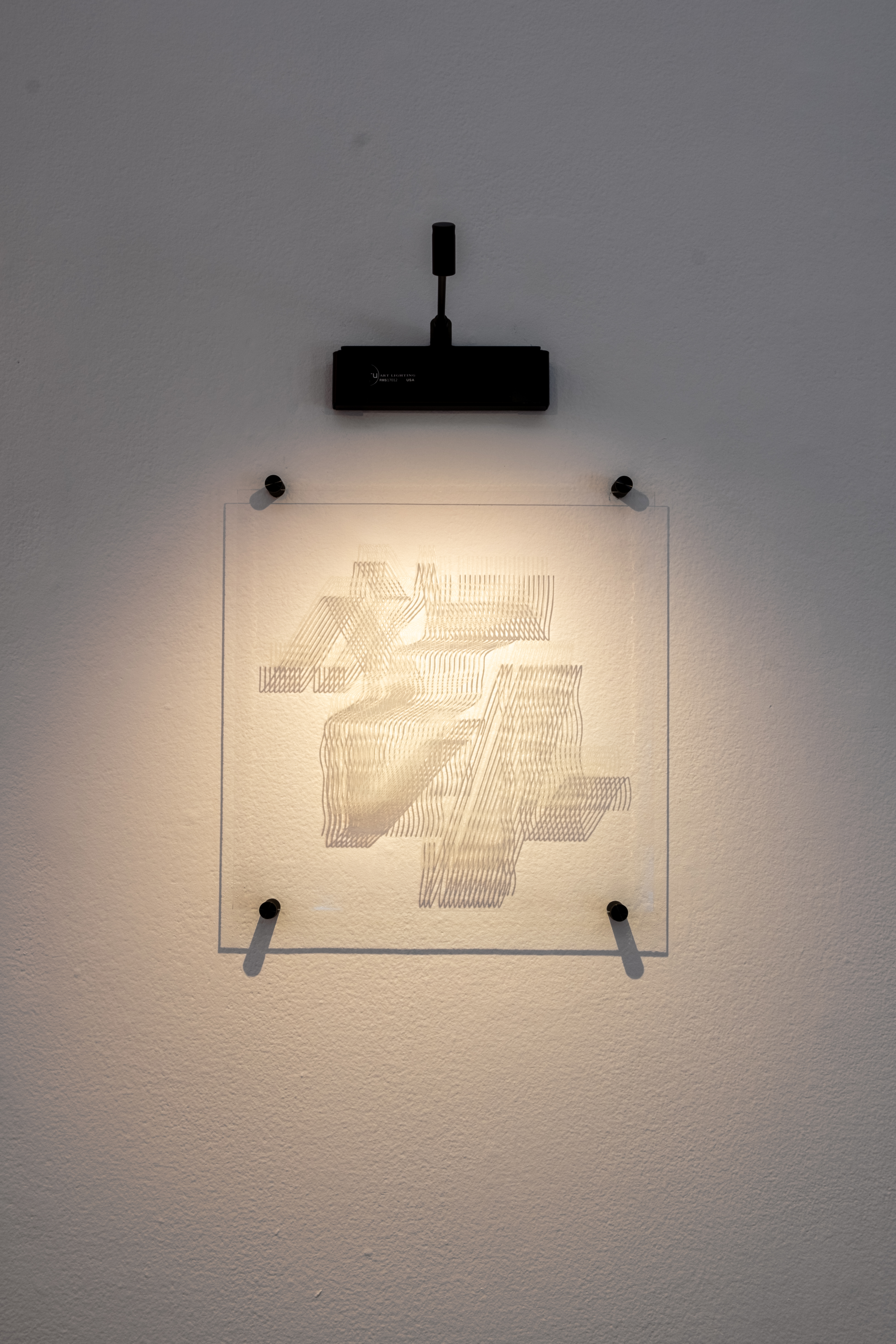


Photos by R George
This work explores lines as topographical features that can create illusions of depth. It imagines how a flat surface might extend expressively in the spatial mind of a dyslexic. The light shines through the glass casting a shadow of the etching on the wall. This layering creates a moiré effect.
This work explores lines as topographical features that can create illusions of depth. It imagines how a flat surface might extend expressively in the spatial mind of a dyslexic. The light shines through the glass casting a shadow of the etching on the wall. This layering creates a moiré effect.
︎
OP60S
MIXED MEDIA
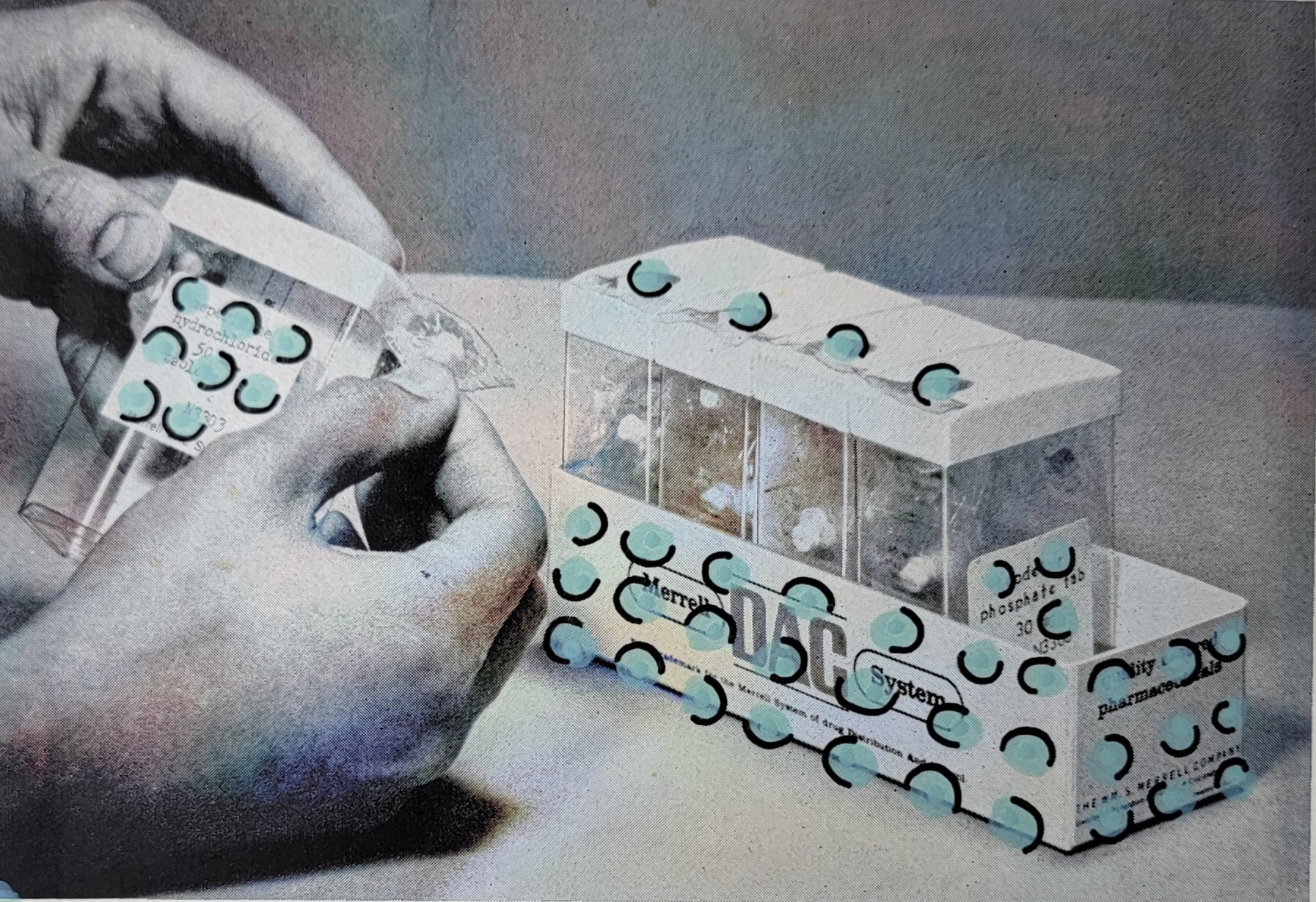

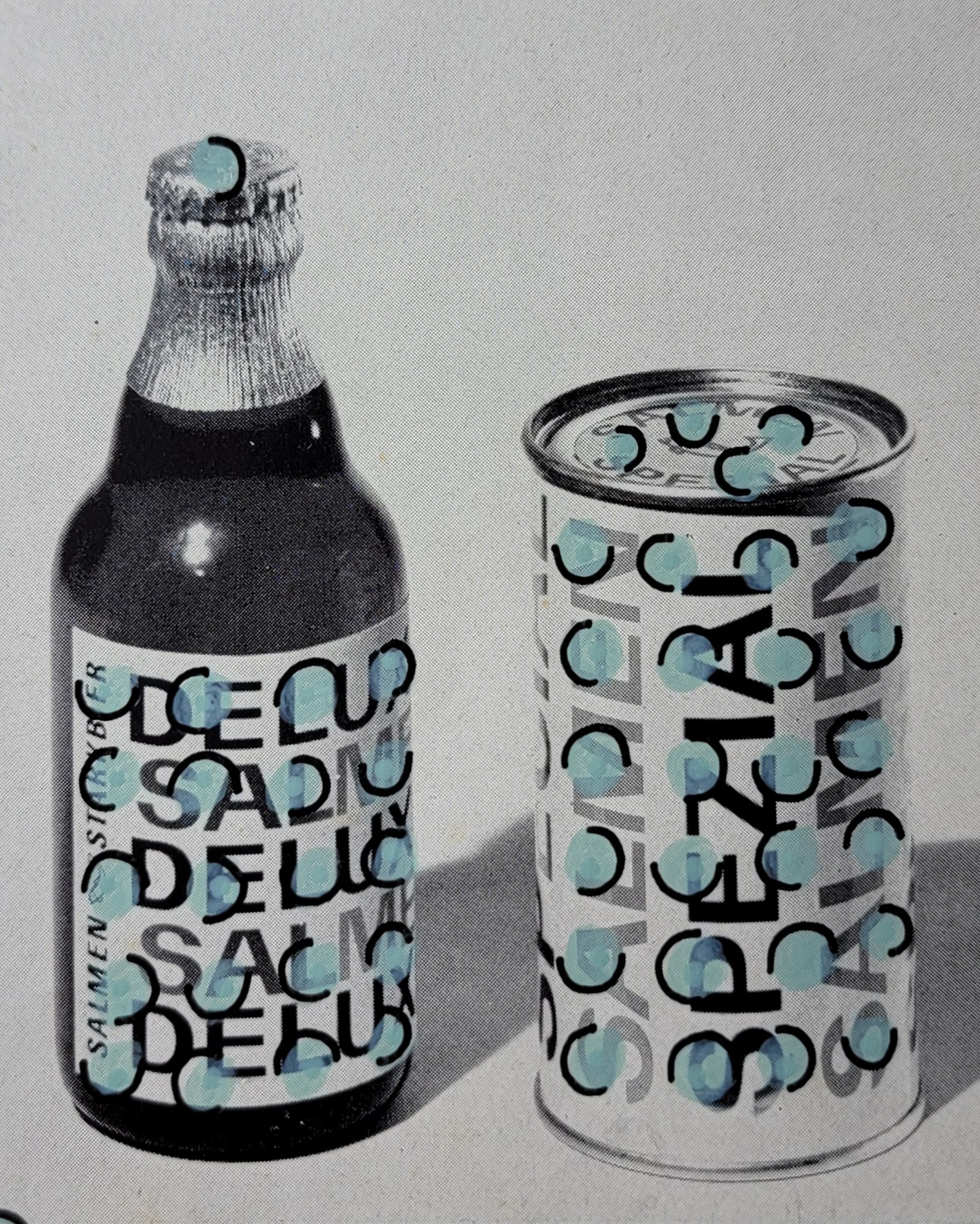
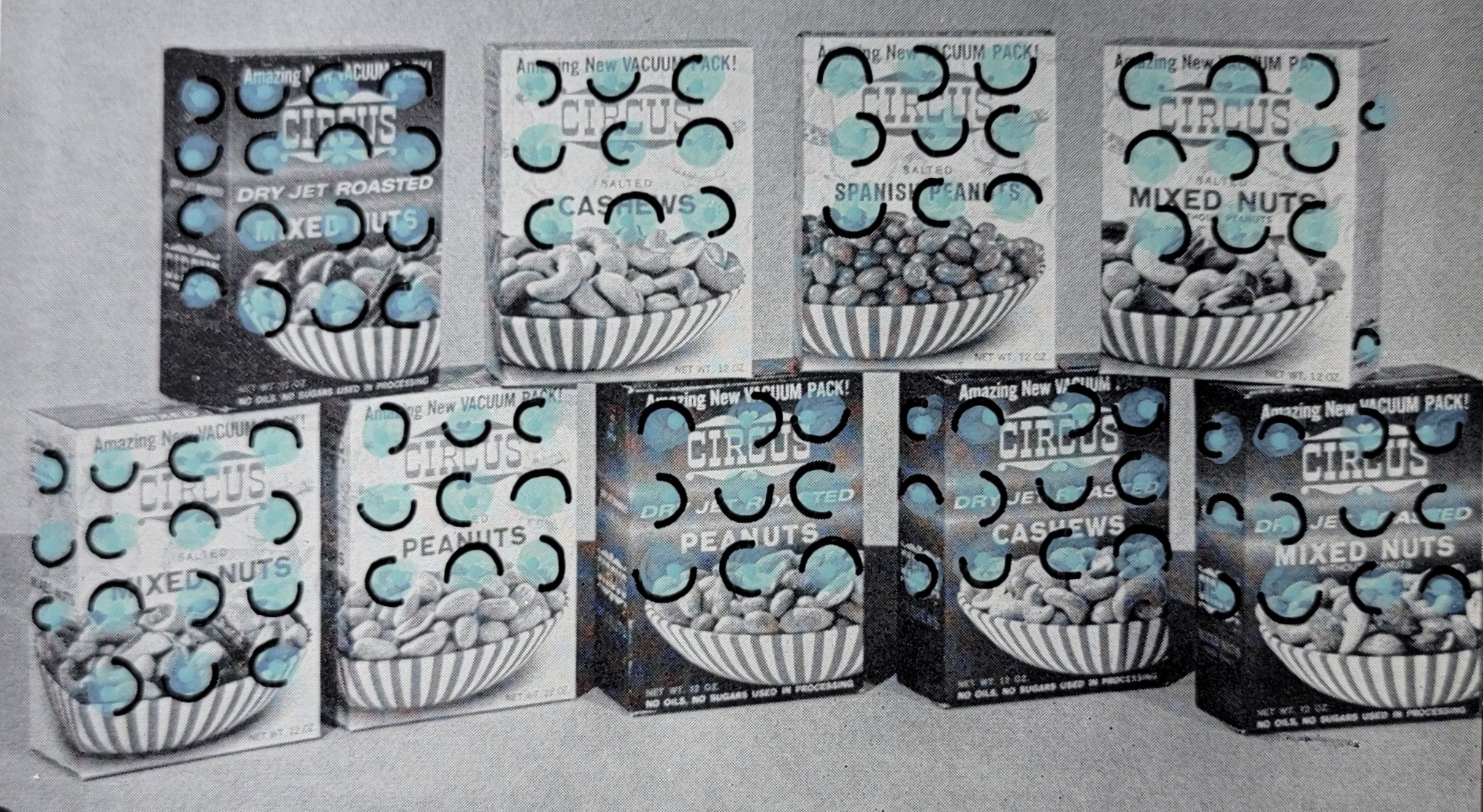
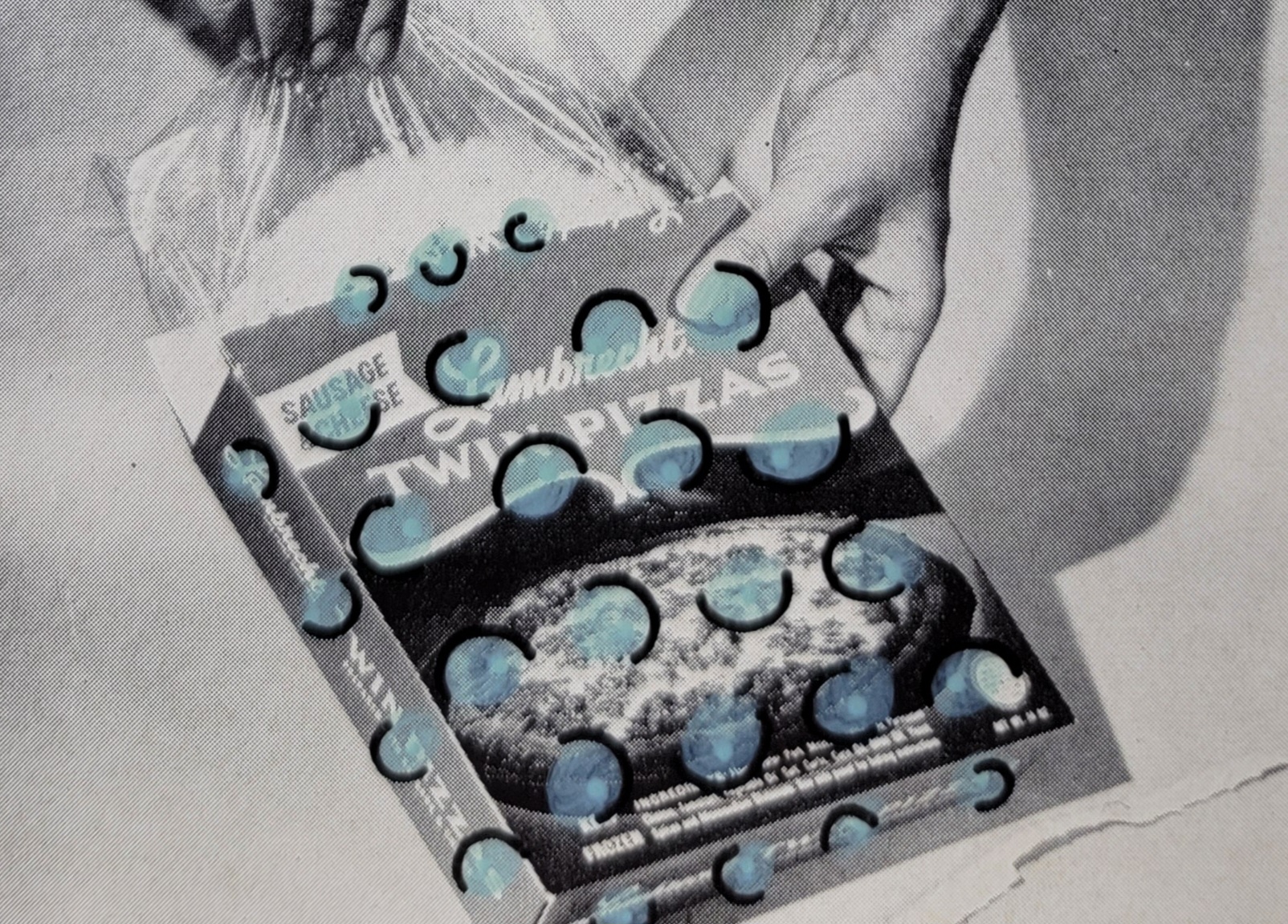
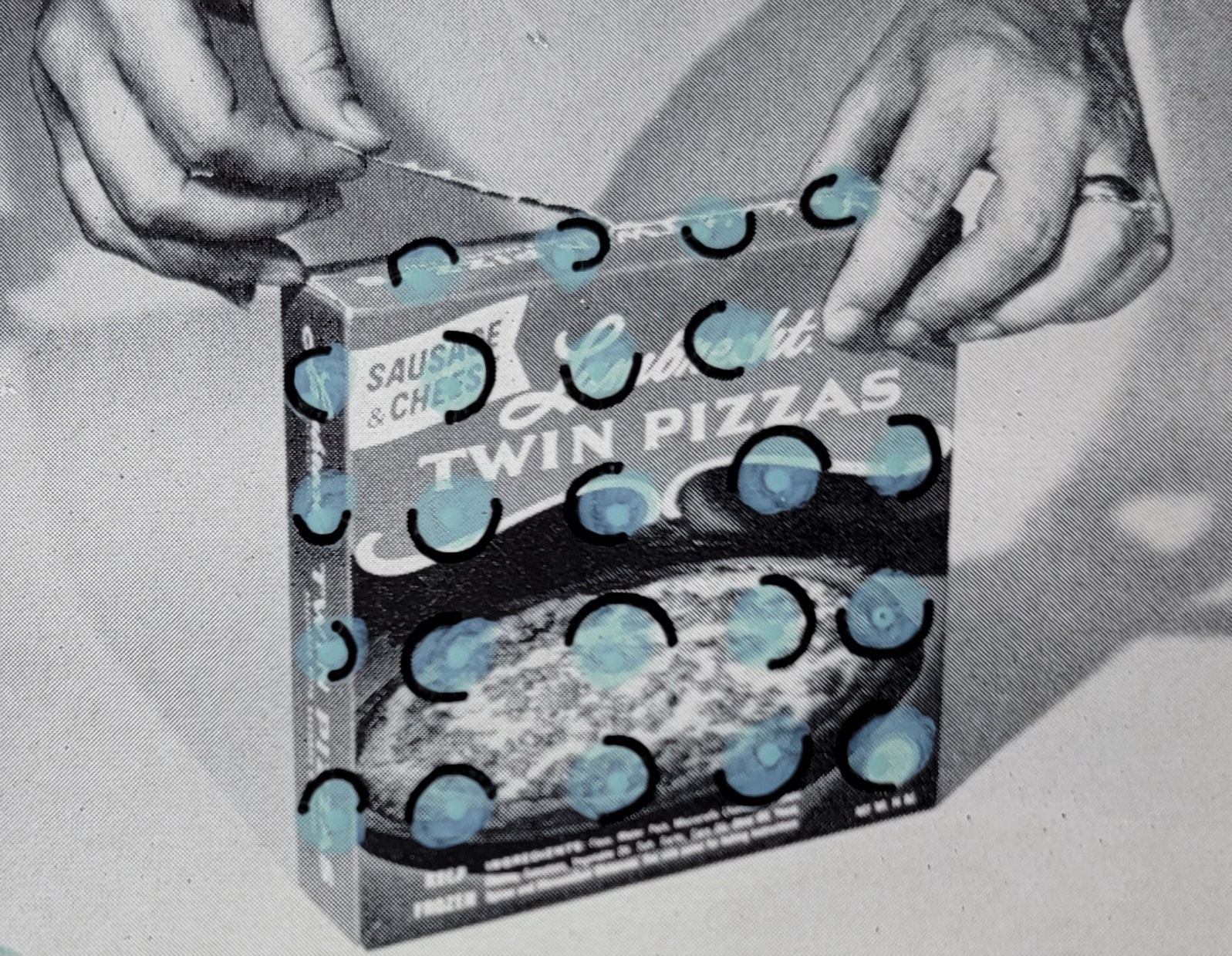



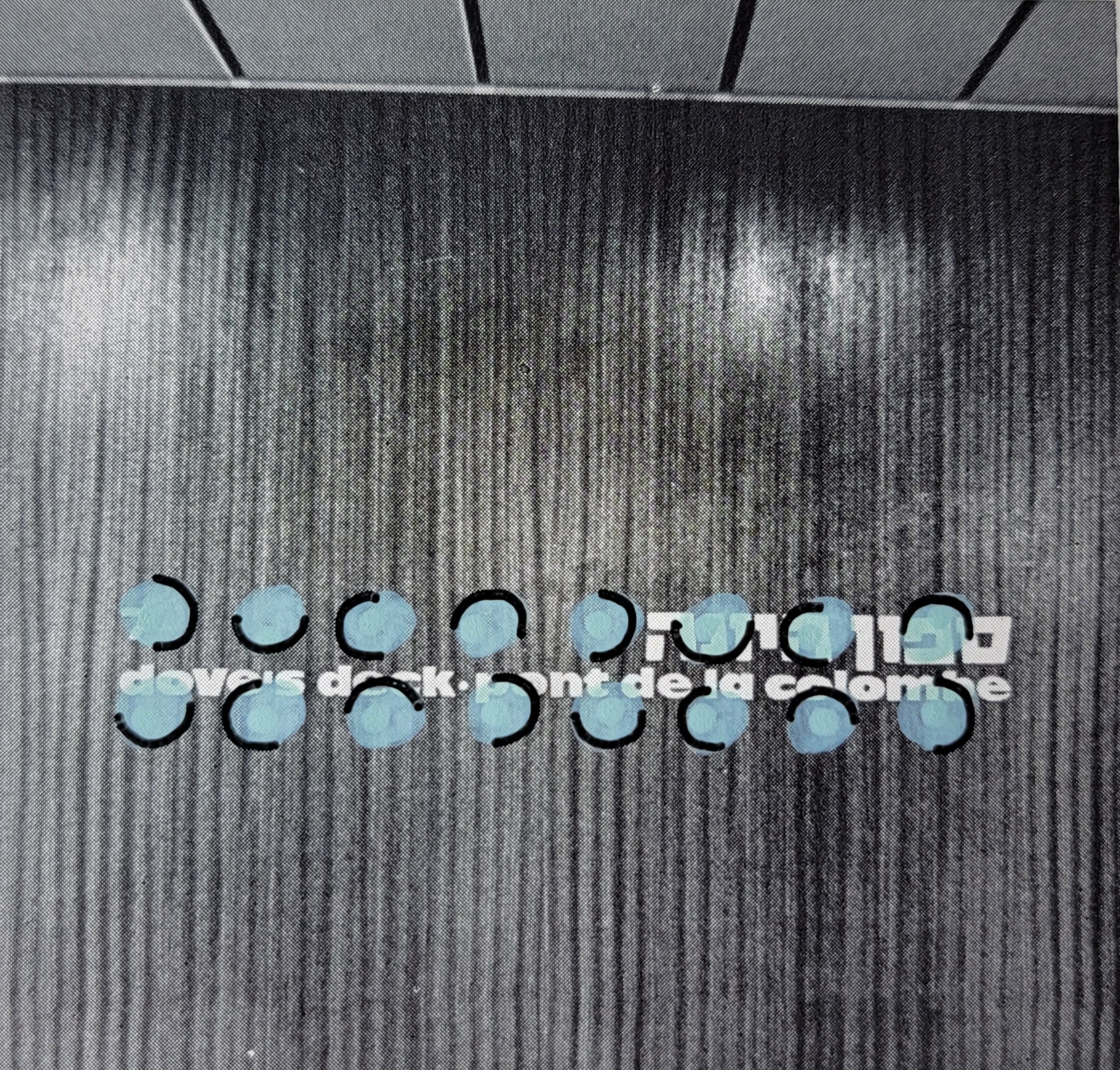


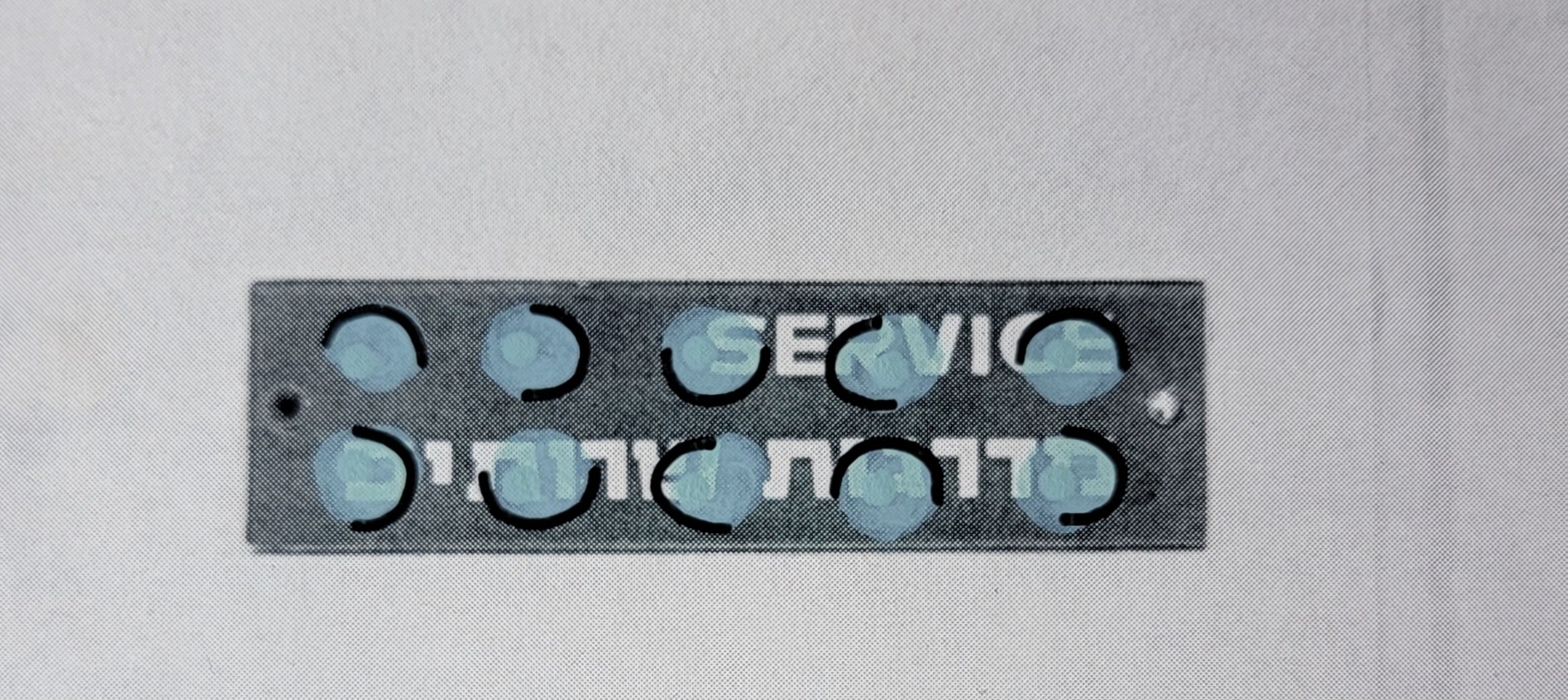



This work utilizes optical illusions as a metaphor for difficulties dyslexics can experience processing text. It explores how one might perceive subtle movement where there is none. This series uses images of products to show different ways you might encounter text. The visual illusions drawn on top of the text create a disruption for the viewer. The use of images from a 1960s architecture magazine pays homage to the emergence of Op-Art.
︎
PHONICS
WOOD AND PAINT
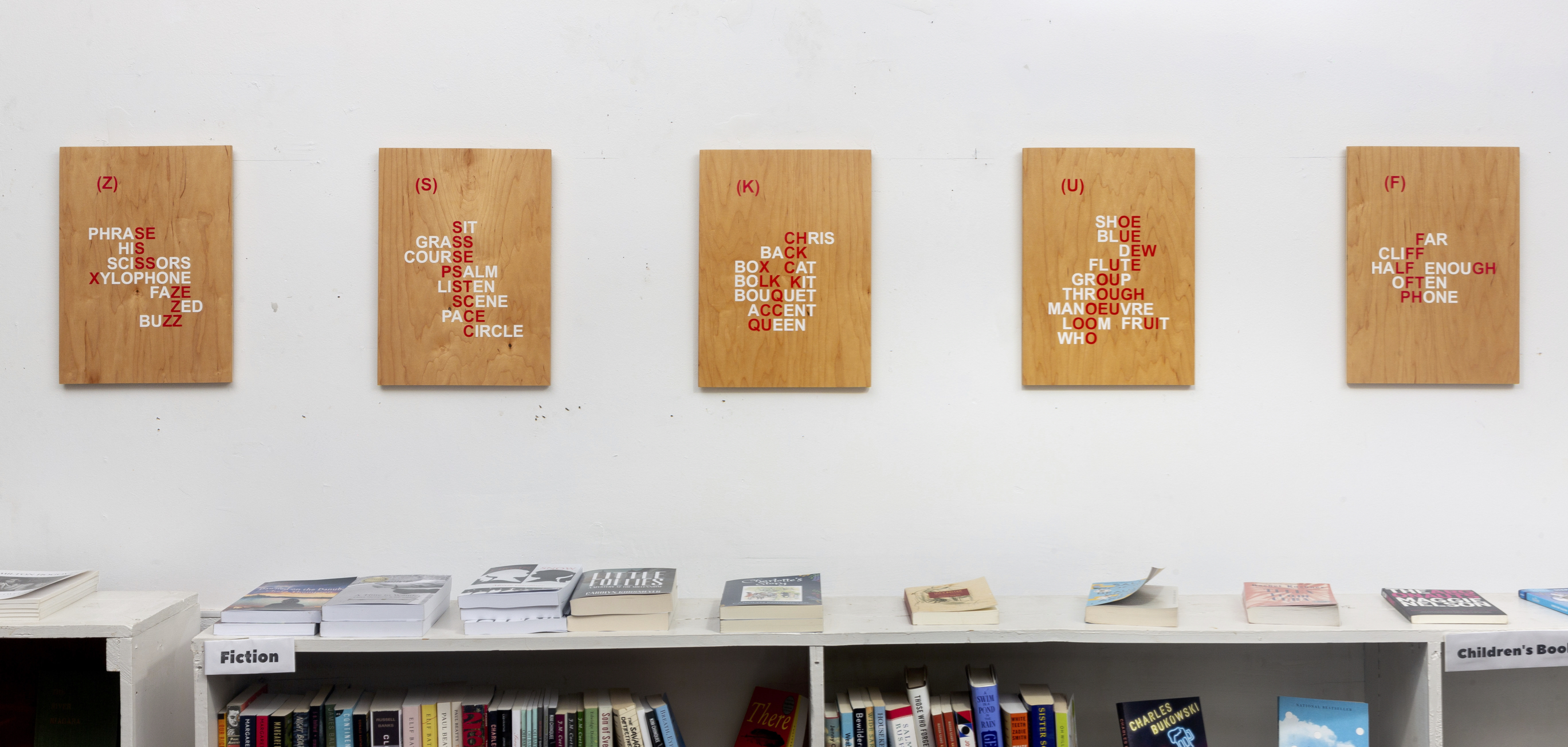
Photos by R George
Phonics allows us to correlate sounds to different letter combinations, which can have a large degree of variability. This work shows letter combinations for the sounds (Z), (S), (K), (U), and (F). The words are arranged in different shapes to resemble vague creatures that can be widely interpreted.